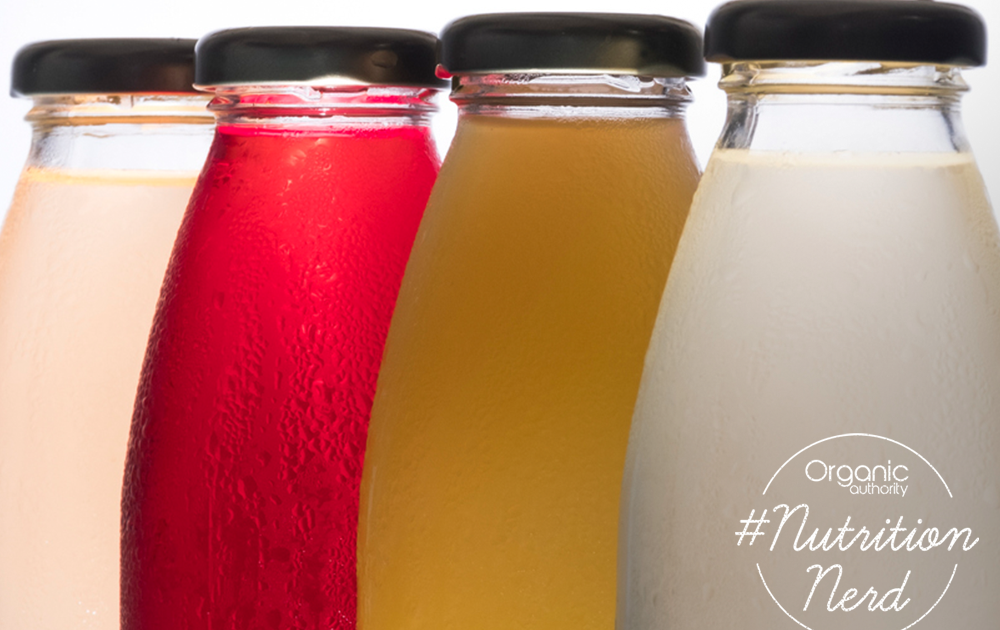How to Choose the Healthiest Kombucha
Not all kombucha is created equal.

Kombucha is everywhere these days. This fermented beverage, thought to have originated in Japan or China, was once found only in health food stores. Today you can find it in nearly every grocery store and even gas stations. But is all kombucha created equally? Likely not. Here are some tips for finding the good stuff.
What is Kombucha Anyway?
Kombucha is fermented green or black tea made with water, tea, sugar, and culture. The bacteria, often called the mother or mushroom, makes the drink effervescent and slightly alcoholic. It also contributes to the health benefits including its probiotics. For a drink that only hit the market about a decade ago, it’s wildly popular and is now enjoyed by many.
Does Kombucha Have Health Benefits?
Enthusiasts claim that kombucha does everything from boost the immune system to cure cancer, but there’s little science to back up such claims. However, some research has shown the positive impacts of this bubbly brew.
-A study published in the April 2014 issue of Microbiology found that kombucha does contain a number of probiotics, specifically gluconacetobacter, acetobacter, lactobacillus, and zygosaccharomyces, which are all known to be health-promoting compounds.
-Another study published in the June 2000 edition of the Journal of Agricultural and Food Chemistry found that kombucha contained acetic acid which could kill bacteria like e.coli in the gut.
-While there are few human studies, a study published in the May 2012 edition of BMC Complementary and Alternative Medicine found that kombucha “induced attractive curative effects on diabetic rats, particularly in terms of liver-kidney functions.”
-B vitamins, often listed on the label, are a known byproduct of the fermentation process.
How to Choose the Best Kombucha
When it comes to choosing the best kombucha, it’s best to look at the ingredients. Again, water, tea, sugar, and culture are the only ingredients that are required for making kombucha. These tips can also help you choose a high-quality product.
- Choose organic, unpasteurized or raw kombucha. All kombucha, according to Julia Kravets, avid home brewer and founder of Little Choc Apothecary, should require refrigeration. Pasteurization kills all the healthy probiotics that help boost your immune system.
- Avoid excessive sugar. Kravets says that a gram per ounce is about the right amount, any more and it’s very likely being added for taste instead of residual from the fermentation process. But too little sugar is also an issue because, again, sugar is needed in the fermentation process.
- Read your ingredient label carefully. “[Look for] clearly stated ingredients, such as fruits and herbs. No stevia or other artificial sweeteners. Kombucha can taste great without any additives. Make sure the kombucha culture is listed and if possible a listing showing probiotic count. Also steer clear of “natural flavors,” says Kravets.
- Check the bacteria. Make sure that either acetobacter and gluconobacter are present on the ingredients label. “Acetobacter and gluconobacter are the naturally formed bacteria in the kombucha process. Lactic acid bacteria are sometimes found in kombucha as well. Some companies use a proprietary bacteria made in a lab. Information on these is very difficult to get ahold of as it’s usually protected. Acetobacter makes acetic acid which is antimicrobial and helps with digestion, weight loss, blood sugar, and overall gut health,” says Kravets.
Home Brewing Tips
Just like cooking, when you brew your own kombucha you know exactly what’s in it. Not to mention that it’s much more sustainable because it isn’t hauled halfway across the country in a refrigerated truck. Here are some simple tips for brewing your own kombucha.
- The main concern for home brewers is ensuring sanitary conditions when brewing the beverage to avoid sickness as a result of contamination. You should beware of fruit flies that like to hover around kombucha (especially in the summertime). Keep the brew sealed in a cabinet where flies cannot get to it.
- Make sure that your kombucha brew is set away from any rutting fruit. The mold spores travel through the air and can get into your brew. You’ll want to brew in a clean place for the same reason.
- When you first get started brewing kombucha you should get the hang of making plain kombucha first before diving into the more complicated flavors.
Related on Organic Authority:
Can You Drink Kombucha Every Day?
7 Divinely Tasty Kombucha Tea Flavor Ideas for Your Home ‘Booch’ Brew
Yasss! There’s Wine in This Kombucha Recipe

